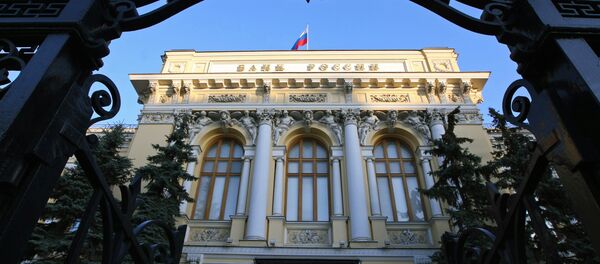"The Board of Directors of the Central Bank of Russia has decided to cut its key interest rate from 17 to 15 percent per annum, accounting for changes in the balance of risks resulting from accelerating growth in consumer prices and the cooling of the economy. The decision made December 15, 2014 to sharply increase interest rates has led to the stabilization of inflationary and devaluation pressures to the extent expected by the Bank of Russia," the statement by the Bank noted.
The move came as a surprise to some experts, who expected the CBR to maintain interests at 17 percent at least until the summer, given that inflation remains high, and the ruble unstable, Russian economic news service Prime explained.
"In the future, inflationary pressures will be restrained by a decrease in economic activity. According to the forecast of the Bank of Russia, the growth of consumer prices will fall below 10 percent by January 2016."
The Bank's press release adds that "the prevailing monetary conditions are creating the preconditions to reduce inflation in the medium term. The annual rate of growth of the money supply (M2) has declined significantly. Interest rates on deposits have increased significantly, which will create the conditions for an increase in the propensity to save and to stimulate the flow of funds to bank deposits. Rising interest rates on loans and banks' increasing demands [to ensure] the quality and solvency of borrowers has resulted in a slowdown in the growth of credit in the economy."
Growth in consumer prices for December 2014 amounted to 2.6 percent as a result of the significant weakening of the ruble, inflation expectations and increasing consumer spending on non-food durable goods. As of January 26, the annual growth in consumer price inflation amounted to 13.1 percent.
On December 15, the Central Bank made the largest single interest rate increase since 1998, raising the rate from 10.5 to 17 percent. The Bank noted that its decision was aimed at limiting risks of ruble depreciation and inflation. The Bank’s decision came amidst the currency's loss of nearly half of its value in December 2014, in part due to a sharp decline in oil prices. Oil price declines directly and significantly affect the Russian economy, which is heavily reliant on energy exports. After the interest rate was increased, the national currency partially stabilized.





